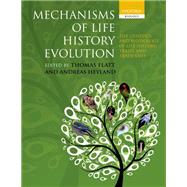Mechanisms of Life History Evolution The Genetics and Physiology of Life History Traits and Trade-Offs
, by Flatt, Thomas; Heyland, Andreas- ISBN: 9780199568765 | 0199568766
- Cover: Hardcover
- Copyright: 7/7/2011
Life history theory seeks to explain the evolution of the major features of life cycles by analyzing the ecological factors that shape age-specific schedules of growth, reproduction, and survival and by investigating the trade-offs that constrain the evolution of these traits. Although life history theory has made enormous progress in explaining the diversity of life history strategies among species, it traditionally ignores the underlying proximate mechanisms. Mechanisms of Life History Evolutionargues that many fundamental problems in life history evolution, including the nature of trade-offs, can only be fully resolved if we begin to integrate information on developmental, physiological, and genetic mechanisms into the classical life history framework. Each chapter is written by an established or up-and-coming leader in their respective field; they not only represent the state of the art but also offer fresh perspectives for future research. The text is divided into 7 sections that cover basic concepts (Part 1), the mechanisms that affect different parts of the life cycle (growth, development, and maturation; reproduction; and aging and somatic maintenance) (Parts 2-4), life history plasticity (Part 5), life history integration and trade-offs (Part 6), and concludes with a synthesis chapter written by a prominent leader in the field and an editorial postscript (Part 7).






